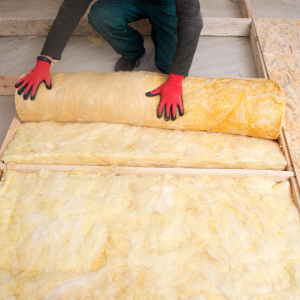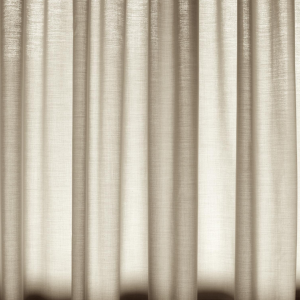It’s that time of year where the sun begins too early, and the mercury in the thermometer begins to drop further and further down.
Our normal reaction to cooler temperatures is to get the heater running in the house. Problem solved, right? What if you’re trying to be more budget conscious, though? Is there a way to get warm so you can get the sleep you need with shivering all night?
If you’re looking to keep warm while you sleep, without breaking the bank, we have some tips that can help. Armed with the proper knowledge, you can SAFELY keep the chill at bay without dreading the next oil bill.
Check the insulation
Yes, we know that this first tip can be expensive up front. Keep in mind, however, that having your home properly insulated can be the difference between dealing with cold drafts throughout the entire house or keeping the heat inside, therefore offsetting the costs over time. Keeping the home properly insulated doesn’t just mean ensuring you have proper insulation panels or foam in the attic and basement. Look into plugging any holes in the walls, adding weather stripping under the doors of the house, and fixing any broken seals in the windows. Remember, you want to keep as much warm air inside, and keep the cold air outside. Maintaining proper insulation will help keep heating costs down!

Use fans to drop down heat
Remember learning in school that cold air sinks and hot air rises? If you have a ceiling fan, you’ve probably used it over the hot summer months to circulate cool air around the room. If you take a close look, you may see a switch on the fan. Moving this switch will make the fan spin in a clockwise direction, which will draw the warm air above the fan down into the room. Before you run the fan in this configuration, make sure to dust the top of the fan blades, so you don’t have any dust falling from the fan and have it get all over your room.
Here comes the sun
Solar power isn’t the only benefit the brightest star in our galaxy can provide. Opening your drapes in the morning to let the sunlight in can help warm up your room. If you have multiple windows that face different directions in your room, open the drapes on the window that will get the most sunlight in. The sunlight won’t increase the temperature considerably, but it will help reduce the chill.

Close the drapes
Believe it or not, the frightful cold air outside can transfer into your room through the windows. Once your bedroom isn’t getting any more sunlight, you will want to close the blinds on your windows. If you can afford to, look into insulated or heavy lined drapes to put over your windows in the winter. If you install these drapes properly, you can cut heat loss up to 25%, according to the U.S. Department of Energy. To maximize the effectiveness of drapes, try the following:
- Install a cornice over your window to block cold air from the gap between the top of the drapes and the ceiling.
- Have drapes that are wider and longer than the window.
- Install the drapes as close to the window as possible.

Decorate the room with rugs
If you want to keep your room warm while creating a unique look for your room, adding a rug is right up your alley. Adding a rug to your floor helps keep your foot nice and toasty when you wake up, and adds a little more insulation to your bedroom. When looking for a rug, take a look at the stitch count. Higher stitch counts means more yarn was used to produce the rug. The higher the stitch count, the thicker the rug will be. Of course, thicker rugs will produce better insulation.
There are different materials available for rugs to add to your room. In terms of warmth and durability, a wool rug is the best option. Unfortunately, these kinds of rugs can be on the expensive side, and they require specialized cleaning that also isn't cheap. If you’re looking for cheaper alternatives, cotton, acrylic and nylon carpets are good choices. While these materials aren’t as durable compared to wool, the price points are much friendlier. Cleaning these types of rugs is also much easier and cheaper than wool.
Unwind in the bathtub
Looking for something that will help you warm up before bed that can relax you at the same time? Try soaking in a warm bath. The timing of the bath is important. Try taking the bath no more than 90 minutes before crawling into bed. Not only will the warm bath help you feel warm, but it can act as a way to destress after a long day, as well as relieve any wintertime aches. The warm bath may also help you get to sleep, as a study by the Sleep Medicine Review found that your internal body temperature will decrease, alerting your body it’s time to go to sleep.
Get the bed to be the warm place
While keeping your room warm is an important step to keeping warm while you try to sleep, you shouldn’t overlook your bed as something you can make warmer. Flannel sheets help trap warm air and your body heat while you are sleeping, without making you too hot and causing you to sweat. It’s important to know that flannel sheets have a tendency to shrink after the first wash, and that the sheets can pill, meaning little round balls form on the surface, over time. Cotton-poly blend flannel sheets are less likely to pill or shrink, however.
If you have extra blankets on hand, put them to work! Layering up the bed like layering up when you step outside can be the difference between feeling a little cold and feeling toasty under the sheets. And finally, try using any extra pillows you have on hand as well. You’ll need around four pillows to make this work. Pile the pillows to look like a fort to help with insulation. Just make sure you give yourself enough room to move around if you’re a combination sleeper.

Dressing for the occasion
Since you already dress for the elements in the winter when heading out for the day, why not get dressed to keep warm in bed? Wearing warm clothes to bed can really help keep the chill at bay when you are trying to get those much needed Zs. Try combining a warm set of pajamas with thick, warm socks to keep the entire body warm. And don’t forget to cover your head as well, just to make sure that the extremities are kept warm and you don’t lose any body heat.
Of course, there are some things you should avoid wearing to bed, even if they do help keep you warm. Avoid tight clothing at all costs. Not only will tight clothing potentially be painful since it might cut off blood flow, it can also affect your melatonin production, which affects the sleep cycles throughout the night. Also, avoid synthetic fabrics, such as polyester or nylon. While these fabrics are indeed warm, they trap too much heat and sweat, making you feel like a hot, clammy mess.
If you are sharing the bed with a significant other, you can certainly help each other out! Sleeping next to one another helps keep warm since your body throws off heat while you sleep, so combining body heat will really be a great help to one-another.
Hot water to the rescue!
It may be an old trick, but using a hot water bottle can be quite effective. Right before getting to bed, fill a water bottle with hot water to place at your feet. Don’t boil the water, as you don’t want the water too hot where it may burn you. The heat may last only through half of the night, but the extra support may help you fall asleep more easily. If you’re looking more for a modern approach, there are bed heaters that can blow in warm air under your sheets to help keep you warm. Keep in mind that these new devices can carry high initial costs, but they can help lower the heating bill if used properly.












